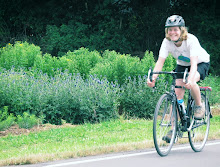“Cooking the Navadarshanam Way”, it turns out, means using a minimum of oils and refined sugar to prepare food. Two trustees are vegan, they all fast often, and everybody loves raw foods. Luckily, they’ve mastered the art of healthy cooking and most of the dishes were very good. Fresh salads of coconut, cucumber and herbs, spicy curries served over red rice, vegan cakes and herbal teas kept me pretty well fed.
As much as I enjoyed just cooking and eating, I wanted to see how and where Navadarshanam was getting all this food. My experiences with Vanastree so far have comprised sort of a crash-course in small-scale agriculture and food politics, so Navadarshanam’s food production system promised to be another piece of this neverending puzzle. To my initial disappointment, however I found that they don’t have such a system per say. No matter how much I pestered Ananthu, the one who might be loosely be labeled as “in charge” of the place, I couldn’t get a precise explanation for this. Eventually, however, I figured out the reasons seem to be two-fold: the first is a series of “problems” in growing crops that he alluded to (I assume this has to do with the typical difficulties of weather, soil and animal invaders), and the second is the dedication to “natural farming” that one of the founding trustees, Pratab, brought with him.
A few decades ago, Pratab was living in a farming commune when he read Masanoba Fukuoka’s The One-Straw Revolution, which I quoted in a previous post. Fukuoka basically invented natural farming (though, again, it draws on previous traditions) in Japan, and his ideas have been extremely influential to the organic farming movement. Basically, natural farming asks how to reduce the inputs, both of labor and materials, involved in growing food. The answer he came up with was to eliminate everything – don’t weed, don’t apply compost, don’t till, and certainly don’t use synthetic pesticides, herbicides or fertilizer. Most of his experiments had to do with rice, and the amazing thing is, it actually worked. In fact, he recorded higher yields than conventionally grown rice, and of course did a lot less work than those farmers. He also applied this method to growing vegetables: scattering seeds, seeing what came up, and then harvesting it, leaving an little of the crop to reseed for next year. Seeing success in that as well, he opened up a whole school and his books became bestsellers.
Of course, something that works on one mountainside in Japan won’t necessarily work everywhere else, but the idea has been applied in many areas, most recently resulting in the “no-till” agriculture movement popular in the US. And when Pratab read the book, he shared it with his fellow commune members, who then decided to try natural farming on their land. They lived this way (without starving!) for quite a few years, and Pratab became a fervent believer in the method. He describes this whole experience in the introduction to One Straw Revolution that he later wrote.
Pratab went on to become a professor of anthropology at Harvard and wrote many books of his own, but now he lives in Bangalore with a second home at Navadarshanam. In fact, he led my group on a couple of walks, talking quietly the whole way about everything from the benefits of eating ants (which he also demonstrated) to the dangers of industrial agriculture. A sturdy, ever-smiling old fellow, Pratab will talk your ear off if you let him, which many of us did because everything he said seemed somehow steeped in wisdom, although it could have just been his reputation getting ahead of him or the power of the thick white beard.
Still a highly dedicated follower of natural farming and plant-based diets, Pratab has encouraged the Navadarshanam leaders toward a similar lifestyle. After reforesting the 100 acres that they’d invested in, the trustees found that they could harvest quite a bit of food from wild plants. They haven’t gone so far as to include ants in the official menu (and Pratab prefers to pick them fresh off the cow dung anyway), but most of the greens and some other vegetables are found in the forest. Other than that, they get most of their food from outside sources, but plans are in the works to try (again) with a vegetable garden based on biodynamics, a whole other system that I have a very limited understanding of. This effort is what finally reassured me that Navadarshanam’s goals might just be practical and that when the eventual apocalypse does come, their little commune might not be a bad place to be.
So I left Navadarshanam a little sadly, wishing I had more time to hang out in Ananthu’s library, tease Tania and Manuel about their rotis, and listen to Pratab rant in his quiet way about society and the way we eat. Instead, the international team crammed in a car with and a generous family from Bangalore who was heading back there. As the clamoring city abruptly rose around us, I put my pastoral dreams behind me and instead focused on the fried foods and sugary desserts that would soon be confounding my digestive system but delighting my taste buds.
Tuesday, October 28, 2008
Subscribe to:
Post Comments (Atom)




No comments:
Post a Comment